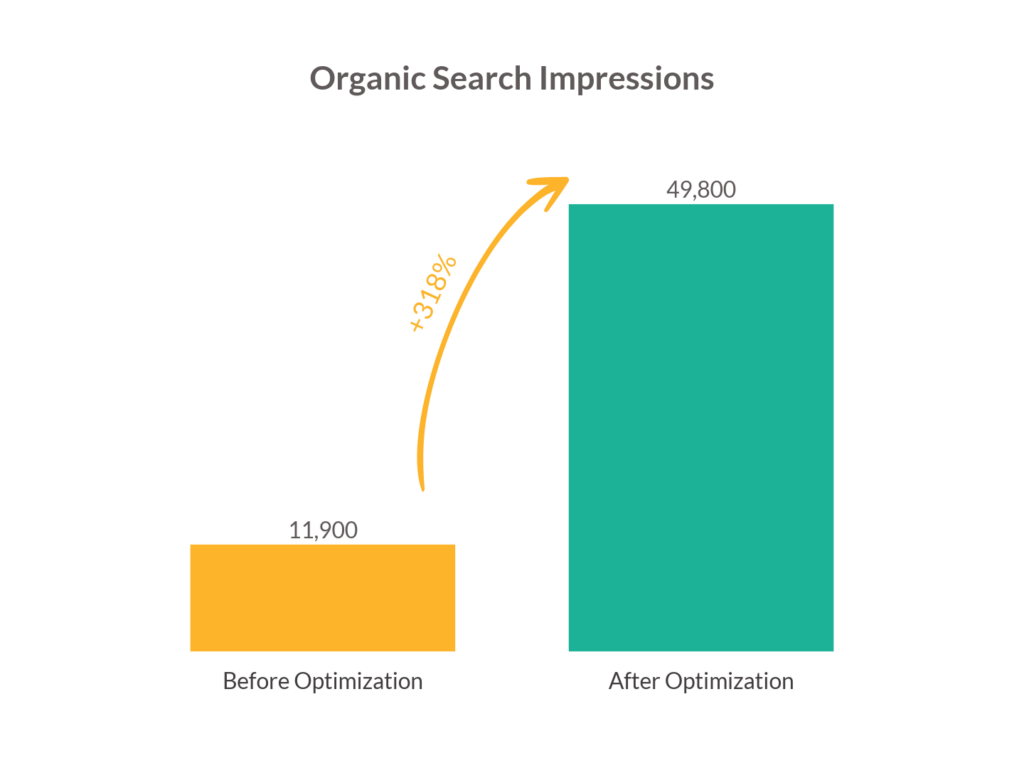
Diving Deep into Healthcare SEO: Winning Top Rankings with Topical Depth Analysis
Topical Depth Optimization: A Proven SEO Tactic
At Wheelhouse, we’re always evaluating new content creation and optimization tactics to see which ones can truly drive performance and create business value for our clients in the healthcare industry.
One tactic that we’ve consistently seen great results from is topical depth optimization.
Understanding the Landscape of Healthcare SERPs
In healthcare-related searches, small to midsize healthcare providers (HCPs) face a unique set of challenges amidst competitive Search Engine Result Pages (SERPs) dominated by large HCPs, university hospitals, and various aggregators. They need to navigate the diverse user intents that range from immediate medical care needs, dictated largely by location, to more informational searches about specific health conditions.
For these smaller HCPs, standing out in a crowded space means effectively leveraging their specific areas of expertise and ensuring their content embodies Google’s rigorous EEAT standards for content that is both comprehensive and genuinely helpful. A key strategy in achieving this is through topical depth analysis, which not only surfaces all relevant opportunities to address the full spectrum of questions and needs that a user might have, but also has consistently boosted SERP visibility and rankings for our clients.
What is Topical Depth Optimization?
Topical Depth Optimization is a technique for optimizing or creating content based on topical search engine results page (SERP) analysis. It’s a time-consuming tactic, but one that allows you to develop content that is finely tuned to meet Google’s standards of truly comprehensive, truly helpful content for your users.
Topical depth optimization works best for content that is already published and ranking in the first few pages of search results for its primary keywords (in that sense, it functions as a form of “striking distance” optimization), but the topical evaluation it involves can be relevant for any piece of content. For health care organizations that want to maximize the Organic ROI of content, or who need to demonstrate their expertise in core high-funnel topics, we would recommend this level of SERP analysis be consistently incorporated into the content development process.
Google’s algorithm has become increasingly intelligent over the last five years, and has been updated at a relatively high frequency over the past several quarters to continue rewarding high quality content and punishing thin, generic content. One way it has dramatically improved is in its ability to assess the depth of a piece of content. The algorithm primarily achieves this through its expansive Knowledge Graph, and its ever-expanding understanding of the complex relationships between entities (people, places, things, etc.).
Another key evolution in Google’s algorithm is its emphasis on EEAT signals – Experience, Expertise, Authoritativeness, and Trustworthiness. This aspect of the algorithm considers a variety of factors to evaluate content credibility, especially crucial for “Your Money or Your Life” (YMYL) pages. In healthcare, where information can significantly impact a person’s health and wellbeing, integrating EEAT principles becomes vital for ensuring content not only ranks well but also meets the stringent standards of accuracy and reliability expected in the healthcare industry.
If a piece of content covering Topic A is substantially covering related subtopics B, C, D and E – it provides a clearer sign that the content is “deep” and has higher EEAT signals compared to more traditional SEO content that attempts to convey relevance through keyword density.
At Wheelhouse, we owe a debt to Jeff Baker and his Moz Blog article for putting this approach on our radar. Since encountering his work, we’ve been able to put this tactic to work for our clients with undeniable results that I’ll share a bit later in this post. First though, let me walk you through the process we use to optimize for topical depth.
How to Optimize for Topical Depth
Optimizing for topical depth in healthcare is a three-step process:
- Identify key topical entities and relationships.
- Research and compile an outline that effectively touches on all related subtopics.
- Optimize content to substantially and expertly cover the full range of related subtopics.
It’s important to note that this approach varies depending on the search context. For instance, in localized SERPs where transactional pages prevail, healthcare providers should focus less on topical depth and more on the practical aspects like appointment booking CTAs and location accuracy. Conversely, for broader topics like diseases or symptoms, emphasizing EEAT signals become more critical, and can be done not only by adding in-depth informational content but also on page context such as qualifications, industry events, awards and certifications. This tailored approach ensures relevance and effectiveness for different types of queries.
1. Identify Key Topical Entities and Relationships
To first identify key topical entities, start digging into SERPs. This will reveal insights into the type of content Google values as relevant and comprehensive for any given healthcare subject. Again, remember that in the world of healthcare, this approach is more applicable to upper-funnel searches with educational intent, where deeper and more reliable content will result in higher rankings.
Within the organic results for each keyword, open the first six or seven results, each in their own tab. In a spreadsheet, begin to track topics and subtopics covered in each result.
The example below shows a simple spreadsheet or table that allows you to review top-ranking URLs for a keyword, naming and noting subtopics that appear in each URL’s content.
| Keyword: [Insert Keyword here] | ||||||
| Position | Topic A | Topic B | Topic C | Topic D | Topic E | Topic F |
| 1: [URL] | X | X | X | X | ||
| 2: [URL] | X | X | X | |||
| 3: [URL] | X | X | X | |||
| 4: [URL] | X | X | X | |||
| 5: [URL] | X | X | ||||
| 6: [URL] | X | X | ||||
| 7: [URL] | X | X | ||||
| Your content should cover: | X | X | X | X | X | X |
2. Research and Outline
From this analysis, begin outline a revised, optimized version of your content that will cover all the necessary subtopics. These subtopics are the foundational elements of a winning article—for users, and for search engines.
As you outline possible changes and additions to your article, it’s important to recognize that substantial research and expertise will likely be required to address each subtopic. The word “depth” should not be overlooked in the phrase “topical depth optimization”: if the writer working on the piece of content does not have the knowledge to offer genuine insights into each subtopic, they should plan on interviewing SMEs within your organization or to review internal documentation, data, etc. to ensure the content’s quality.
3. Optimize and (Re)Publish
After the outline is complete, take the time to write in-depth takes on all the subtopics identified. Remember, topical depth is not about keyword density—it is about writing helpful, informative and expert content to add real depth to your content.
When optimizing an existing piece of content to address a full range of subtopics, work to fill in the new subtopics in a logical way that does not sacrifice the narrative or flow of the post.
Once your content is updated, re-publish the post and request indexation from Google in Search Console
For high-priority content, topical depth optimization will ideally not be a one-time event. If you have an editorial calendar, incorporate ongoing topical depth optimizations into by scheduling refreshes of content throughout the year.
SERPs evolve constantly, so your topical depth optimizations should be slightly different each time you hunt for new topics and subtopics. And each time you update content it is also important to add “Updated for 2024” or other freshness indicators to title tags, H1s or even just the top of the content itself to clearly signal to users and search engines that your content is as up-to-date as possible. While this will go along way in boosting EEAT signals, remember to also look for other opportunities outside of content to establish your credibility is the eyes of Google’s algorithm.
Topical Depth Optimization Success Stories
Boosting Visibility for an Informational Blog Post
One of our clients had an informational blog post that had provided some search visibility and traffic in the past, but faded over time. The content did a good job of speaking to the general topic, but after looking more carefully at key SERPs we realized that competitors were outranking the post with more recent, up-to-date content that covered a wider variety of subtopics.
One of our content specialists at Wheelhouse reviewed SERPs, filled out a topical analysis table like the one included above, conducted research into the subtopics they found and created an optimized, comprehensive version of the post which was then re-published and re-indexed with the recent updates clearly signaled.
In the months that followed, the post’s rankings improved and its incremental search visibility soared:

How Can You Optimize for Topical Depth?
Our content specialists and writers at Wheelhouse DMG are continuing to fine-tune our approach to topical depth optimization. We would love to hear more about your current content goals and challenges and help you choose the right optimization strategy to maximize the business value of your content. We’d be happy to give advice about using this particular tactic, or to have a longer conversation about how we can help you achieve better search performance from your on site content.


